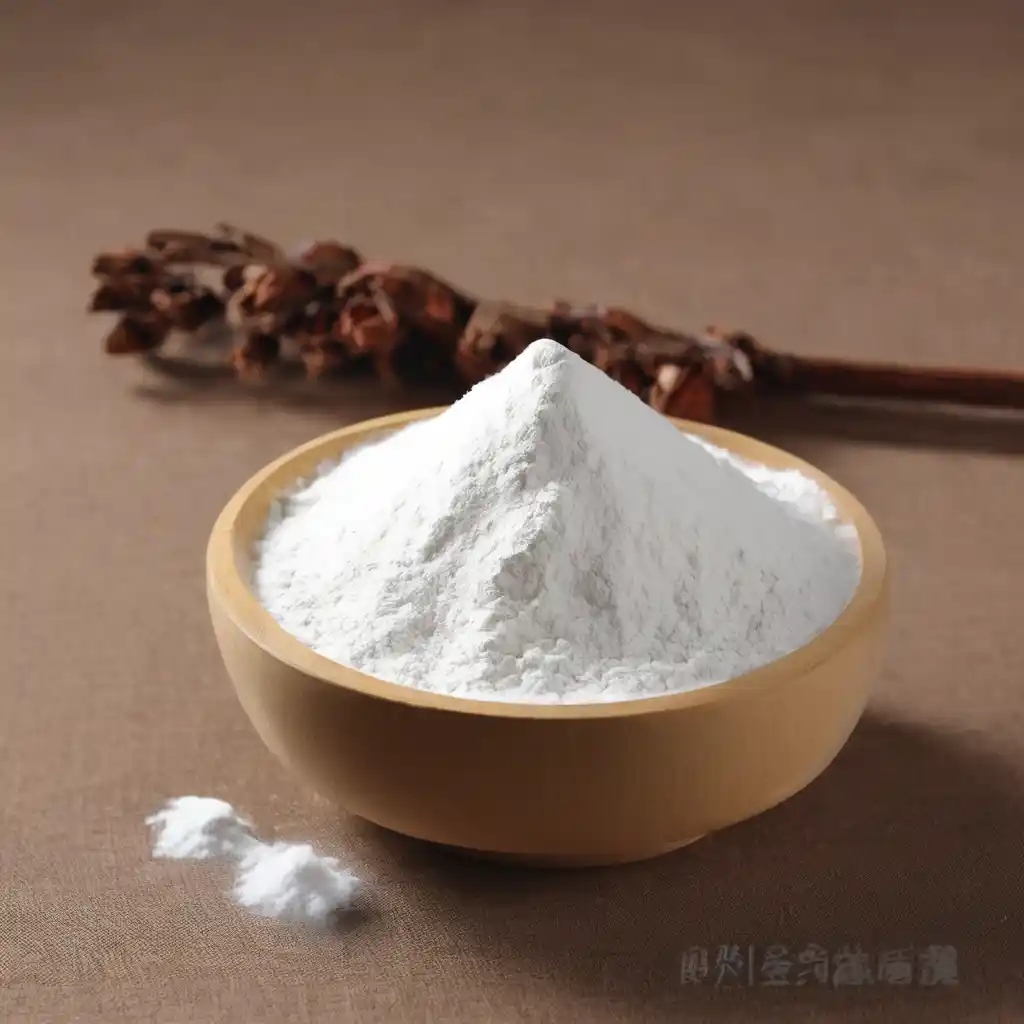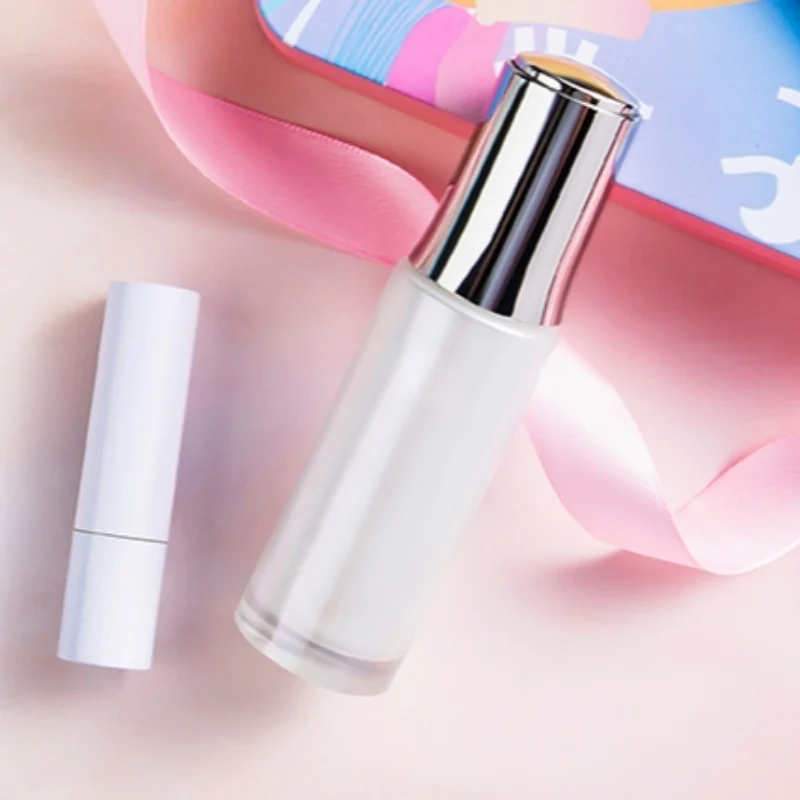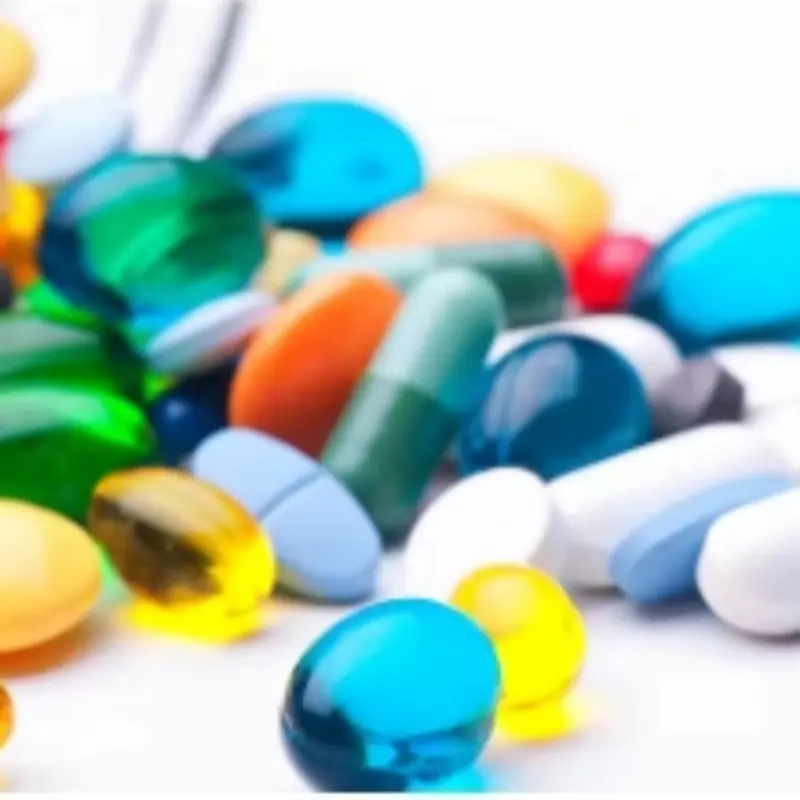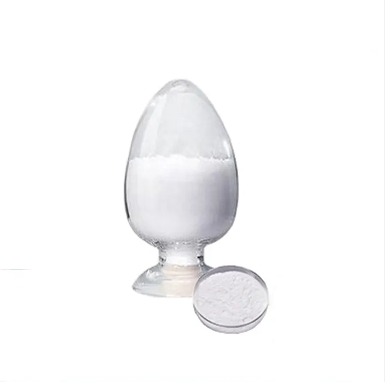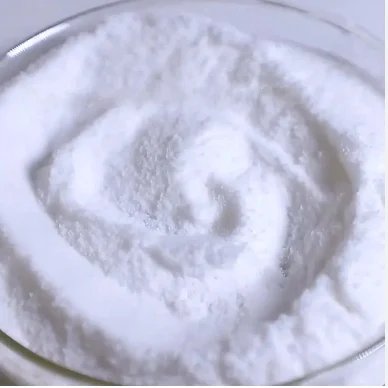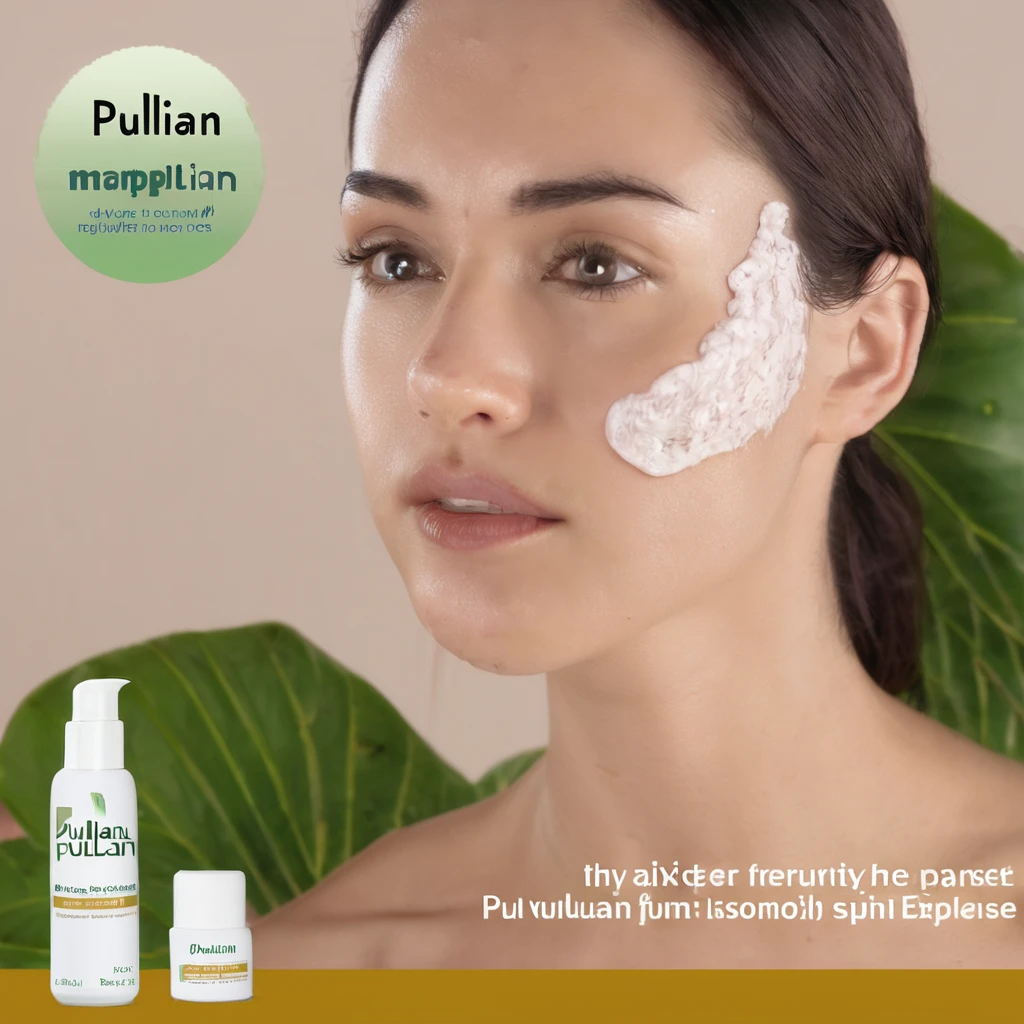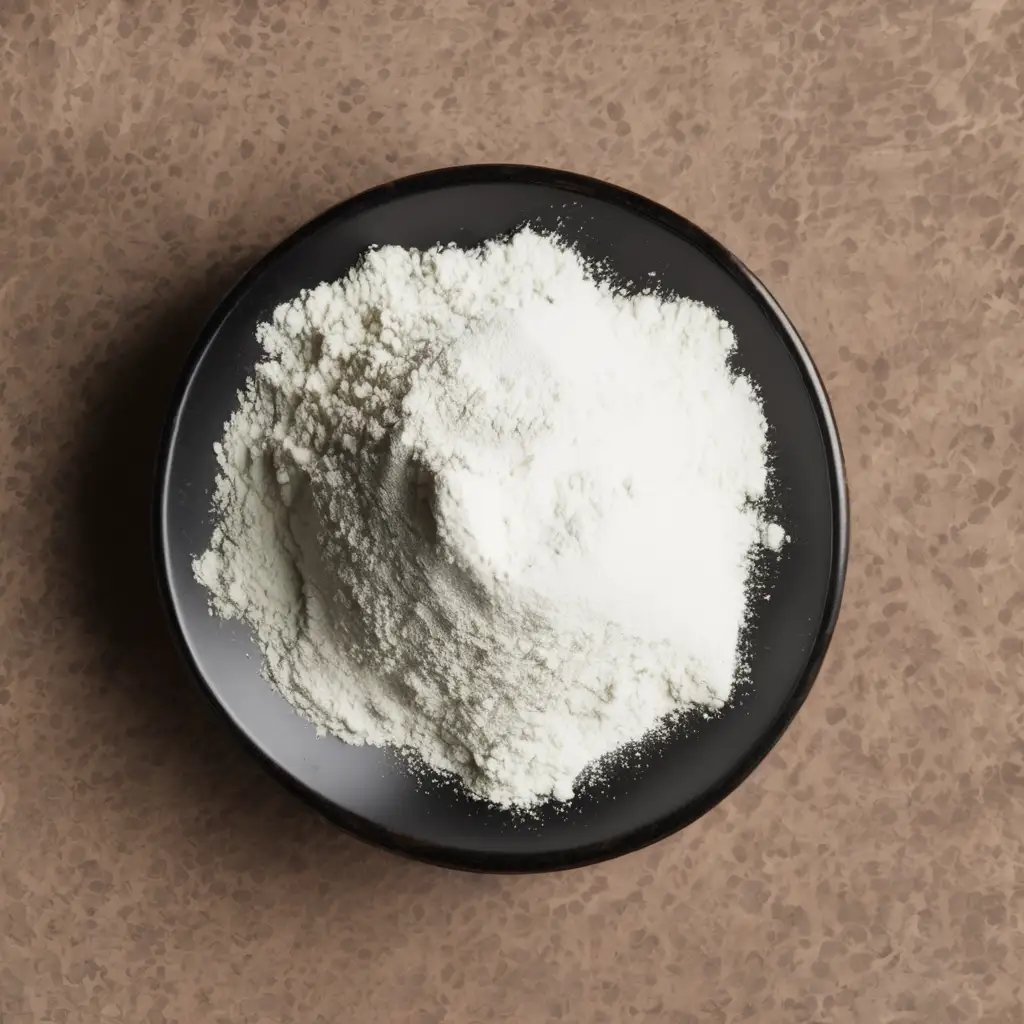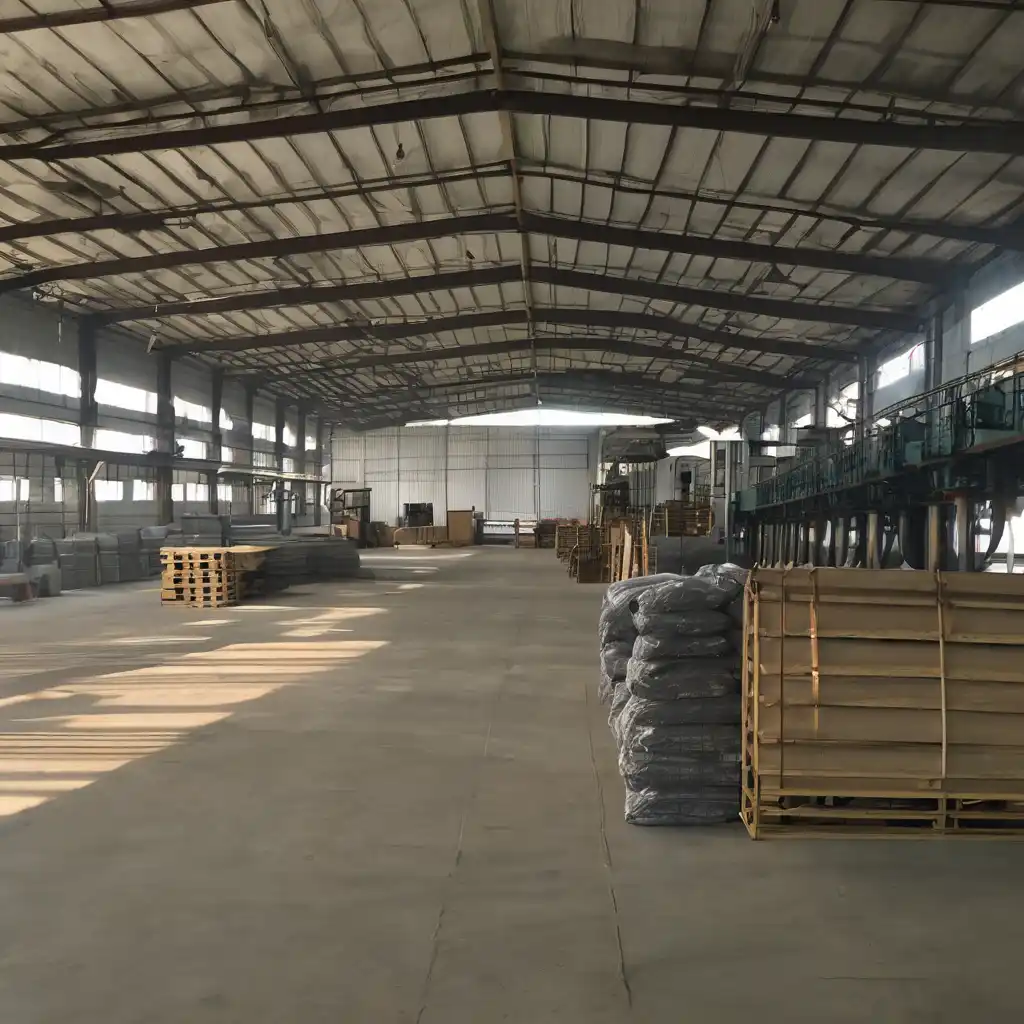Is Pullulan Safe?
Pullulan is a polysaccharide polymer produced by the fungus Aureobasidium pullulans. It has gained considerable attention for its versatile applications in food, pharmaceuticals, and other industries. Its unique properties, such as being tasteless, odorless, and water-soluble, make it an attractive ingredient. However, its safety for human consumption and use in various products is a critical aspect that needs thorough examination. This essay aims to delve into the safety of pullulan by exploring its chemical properties, production process, regulatory status, and potential health impacts.
Chemical Properties and Production
Pullulan is a linear glucan comprising maltotriose units connected by α-1,4 and α-1,6 glycosidic bonds. The distinctive structure of pullulan provides it with exceptional film-forming abilities, making it useful in creating edible films, coatings, and capsules. The production of pullulan involves the fermentation of starch by Aureobasidium pullulans, followed by purification processes to ensure the polymer is suitable for consumption.
The production process is crucial in determining the safety of pullulan. It begins with selecting a non-pathogenic strain of Aureobasidium pullulans and ensuring that the fermentation conditions are strictly controlled to prevent contamination. Purification typically involves removing any residual cells, proteins, and other impurities, often through filtration, precipitation, and drying techniques. High standards in these processes are vital to produce a safe and high-quality pullulan product.
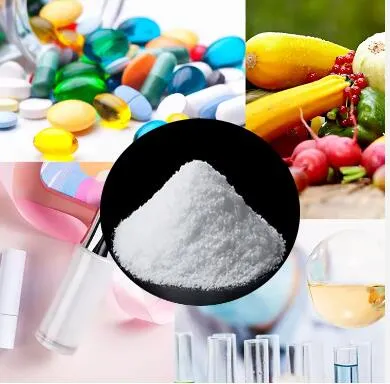
Regulatory Status
The safety of pullulan has been assessed by various regulatory bodies worldwide. In the United States, the Food and Drug Administration (FDA) has classified pullulan as Generally Recognized As Safe (GRAS). This designation means that qualified experts consider pullulan safe under the conditions of its intended use. The GRAS status allows pullulan to be used in a variety of food products without the need for further pre-market approval, provided it meets specified purity criteria.
Similarly, the European Food Safety Authority (EFSA) has evaluated pullulan and approved its use as a food additive. In their assessment, EFSA concluded that pullulan is safe for use in food packaging and coatings at specified levels. Furthermore, Japan's Ministry of Health, Labour and Welfare has also approved pullulan for use in food products, reflecting its global acceptance and recognition as a safe ingredient.
Toxicological Studies
Numerous toxicological studies have been conducted to evaluate the safety of pullulan. Acute toxicity studies have demonstrated that pullulan has a high margin of safety, with no adverse effects observed even at high doses. Sub-chronic and chronic toxicity studies have also indicated that pullulan does not cause any significant toxicological effects when consumed over extended periods.
One of the key studies involved feeding pullulan to rats at various concentrations over a 90-day period. The results showed no significant differences in body weight, food consumption, or clinical signs between the control and treated groups. Additionally, no adverse effects were noted in the histopathological examination of major organs. These findings suggest that pullulan is non-toxic and does not pose significant health risks when consumed within the recommended levels.
Genotoxicity studies, which assess the potential of a substance to cause genetic damage, have also been conducted on pullulan. These studies, including the Ames test and chromosome aberration tests, have consistently shown that pullulan does not have genotoxic effects. This further supports the safety profile of pullulan, indicating that it does not pose a risk of causing genetic mutations or cancer.
Allergenicity and Digestibility
Numerous toxicological studies have been conducted to evaluate the safety of pullulan. Acute toxicity studies have demonstrated that pullulan has a high margin of safety, with no adverse effects observed even at high doses. Sub-chronic and chronic toxicity studies have also indicated that pullulan does not cause any significant toxicological effects when consumed over extended periods.
One of the key studies involved feeding pullulan to rats at various concentrations over a 90-day period. The results showed no significant differences in body weight, food consumption, or clinical signs between the control and treated groups. Additionally, no adverse effects were noted in the histopathological examination of major organs. These findings suggest that pullulan is non-toxic and does not pose significant health risks when consumed within the recommended levels.
Genotoxicity studies, which assess the potential of a substance to cause genetic damage, have also been conducted on pullulan. These studies, including the Ames test and chromosome aberration tests, have consistently shown that pullulan does not have genotoxic effects. This further supports the safety profile of pullulan, indicating that it does not pose a risk of causing genetic mutations or cancer.
Applications in Food and Pharmaceuticals
The unique properties of pullulan make it suitable for a wide range of applications. In the food industry, pullulan is used to create edible films and coatings that can extend the shelf life of products by providing a barrier to oxygen and moisture. It is also employed as a thickening agent, stabilizer, and low-calorie bulking agent. The safety of pullulan in these applications is well-established, with no reports of adverse effects from its consumption in food products.
In the pharmaceutical industry, pullulan is used to produce capsules and tablets. Its film-forming ability allows for the creation of thin, flexible films that can encapsulate active ingredients. Pullulan capsules are particularly valued for their quick disintegration and release of contents, making them suitable for rapid-release formulations. The safety of pullulan in pharmaceutical applications is supported by its non-toxic and non-allergenic properties, ensuring it does not interfere with the efficacy or safety of the encapsulated drugs.
525431731.webp)
Environmental Safety and Biodegradability
Another important aspect of pullulan’s safety is its environmental impact. Pullulan is biodegradable, which means it breaks down into natural components over time without leaving harmful residues. This makes it an environmentally friendly alternative to synthetic polymers, which can persist in the environment for long periods and contribute to pollution.
Studies have shown that pullulan degrades readily in soil and water, with microbial action playing a significant role in its decomposition. The breakdown products of pullulan are non-toxic and do not pose a risk to aquatic or terrestrial life. This biodegradability makes pullulan an attractive option for sustainable packaging and other applications where environmental safety is a concern.
What Are The Main Uses Of Pullulan In The Food Industry?
Pullulan, a naturally occurring polysaccharide polymer produced by the fungus Aureobasidium pullulans, has garnered significant interest in the food industry due to its unique properties. This versatile compound offers several benefits that make it an ideal ingredient for a variety of applications. Here are the main uses of pullulan in the food industry:
Edible Films and Coatings
One of the most notable applications of pullulan is in the creation of edible films and coatings. These films are prized for their excellent barrier properties against oxygen and moisture, which can help extend the shelf life of food products. Pullulan films are clear, tasteless, and odorless, making them suitable for coating fruits, vegetables, and processed foods without altering their sensory attributes.
These edible coatings can help maintain the freshness and quality of products by preventing oxidation and microbial growth. For instance, applying a pullulan coating to fresh produce can reduce spoilage and retain moisture, ensuring that the products stay fresh for longer periods. This application is particularly beneficial in the context of reducing food waste and enhancing the appeal of fresh produce in retail settings.
Thickening and Stabilizing Agent
Pullulan also functions effectively as a thickening and stabilizing agent in various food products. Its ability to form gels and enhance viscosity makes it useful in sauces, dressings, and soups. By improving the texture and mouthfeel of these products, pullulan helps create a more desirable and consistent consumer experience.
In addition to thickening, pullulan can stabilize emulsions and foams. This property is particularly valuable in products like salad dressings, whipped toppings, and certain beverages, where maintaining a uniform texture and preventing separation are critical for quality and shelf life. The use of pullulan in these applications helps ensure that the products remain appealing and palatable throughout their intended shelf life.
Low-Calorie Bulking Agent
With increasing consumer demand for healthier, lower-calorie food options, pullulan's role as a low-calorie bulking agent is gaining prominence. Its ability to add bulk without significantly contributing to caloric content makes it an attractive ingredient for formulating reduced-calorie foods. Pullulan can be used in bakery products, snacks, and confectioneries to provide volume and texture while keeping the calorie count low.
This property is particularly beneficial in the development of weight management products and diet-friendly foods. By incorporating pullulan, manufacturers can create products that cater to health-conscious consumers seeking to reduce their caloric intake without sacrificing taste and texture.
Encapsulation of Flavors and Nutrients
Pullulan's film-forming capability extends to its use in encapsulating flavors, vitamins, and other bioactive compounds. This application is especially valuable in the development of functional foods and dietary supplements. Encapsulation with pullulan can protect sensitive ingredients from degradation caused by exposure to light, air, and moisture, thereby enhancing their stability and shelf life.
Furthermore, encapsulating flavors with pullulan can allow for controlled release, enhancing the sensory experience of food products. For example, pullulan-encapsulated flavor beads can be incorporated into chewing gum, baked goods, or dairy products, providing bursts of flavor upon consumption.
Sugar-Free Confectionery
In the confectionery industry, pullulan is used to produce sugar-free candies and chewing gum. Its natural sweetness and film-forming properties make it an excellent sugar substitute that can contribute to the texture and structure of these products. Sugar-free pullulan-based candies are particularly appealing to consumers looking to reduce their sugar intake while still enjoying sweet treats.
Overall, the main uses of pullulan in the food industry highlight its versatility and functional benefits. From enhancing shelf life and texture to contributing to the development of healthier food options, pullulan serves as a valuable ingredient that meets the diverse needs of modern food production. Its safety, efficacy, and regulatory acceptance further reinforce its status as a key component in innovative food formulations.
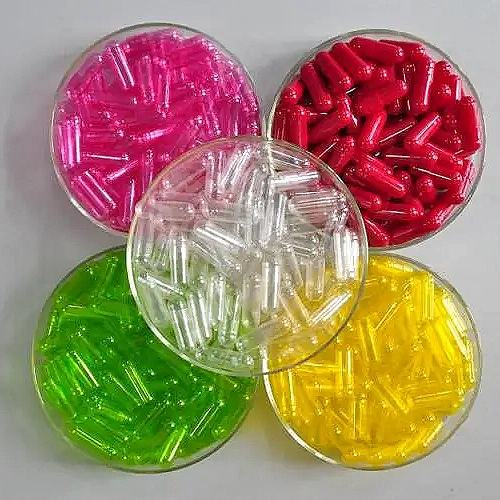
How Is Pullulan Produced And What Are The Quality Control Measures Involved?
The production of pullulan involves a sophisticated process that starts with the fermentation of starch by the fungus Aureobasidium pullulans. Ensuring the safety and quality of pullulan requires stringent quality control measures at each stage of production. Here is an overview of the production process and the quality control measures involved:
Production Process
Selection of Strain:
The production process begins with the selection of a non-pathogenic strain of Aureobasidium pullulans. This strain is carefully chosen for its ability to efficiently produce pullulan through fermentation.
Fermentation:
The selected strain is cultivated in a controlled fermentation environment where it is fed with a carbohydrate source, typically starch or glucose. During fermentation, the fungus metabolizes the carbohydrate and produces pullulan as a secondary metabolite. The fermentation conditions, including temperature, pH, and nutrient concentration, are meticulously controlled to optimize pullulan yield and quality.
Recovery and Purification:
After fermentation, the pullulan-containing broth is subjected to several purification steps to remove residual cells, proteins, and other impurities. Common purification techniques include:
◉Filtration: The broth is passed through filters to remove microbial cells and other large particles.
◉Precipitation: Chemical agents such as ethanol or ammonium sulfate may be added to precipitate pullulan out of the solution.
◉Centrifugation: The precipitated pullulan is separated from the liquid phase using centrifugation.
◉Washing: The precipitated pullulan is washed with solvents to remove any remaining impurities.
◉Drying: The purified pullulan is then dried to obtain a powdered or granular form, ready for further processing and application.
Quality Control Measures
Microbial Safety:
Ensuring the microbial safety of pullulan is paramount. Quality control starts with the selection of a non-pathogenic strain of Aureobasidium pullulans. During fermentation and subsequent processing, stringent measures are taken to prevent contamination with harmful microorganisms. Regular microbiological testing is conducted to monitor the presence of any unwanted microbes and ensure that the product meets safety standards.
Purity and Composition:
The purity of pullulan is a critical quality attribute. Analytical techniques such as high-performance liquid chromatography (HPLC) and gel permeation chromatography (GPC) are used to assess the molecular weight distribution and ensure the polymer is free from contaminants. The carbohydrate content, protein levels, and residual solvents are also tested to ensure compliance with regulatory standards.
Physical Properties:
Quality control also involves assessing the physical properties of pullulan. Parameters such as solubility, viscosity, and film-forming ability are evaluated to ensure the product meets the required specifications for its intended application. Consistency in these physical properties is essential for maintaining the performance of pullulan in various formulations.
Toxicological Testing:
To ensure the safety of pullulan for human consumption, comprehensive toxicological testing is conducted. This includes acute, sub-chronic, and chronic toxicity studies, as well as genotoxicity assessments. These tests are performed to confirm that pullulan does not pose any health risks at the levels used in food and pharmaceutical products.
Regulatory Compliance:
Compliance with regulatory standards is a crucial aspect of quality control. Pullulan producers must adhere to the guidelines set by regulatory bodies such as the FDA, EFSA, and other international agencies. This includes meeting specified purity criteria, conducting regular audits, and maintaining detailed documentation of the production process and quality control measures.
Batch-to-Batch Consistency:
Ensuring consistency between different production batches is vital for maintaining product quality. Manufacturers implement strict batch control procedures, including standardizing fermentation conditions and using precise purification protocols. Each batch of pullulan is subjected to rigorous testing to ensure it meets predefined quality standards before being released for use.
What Are The Environmental Impacts Of Using Pullulan In Products?
The environmental impacts of using pullulan in products are a critical consideration given the growing emphasis on sustainability and eco-friendly practices. Pullulan, a polysaccharide polymer derived from the fungus Aureobasidium pullulans, is recognized not only for its functional benefits but also for its environmentally friendly properties. Here is an in-depth analysis of the environmental impacts of using pullulan in products:
Biodegradability
One of the most significant environmental advantages of pullulan is its biodegradability. Unlike many synthetic polymers that persist in the environment for long periods, pullulan can be broken down by natural processes. Microorganisms in soil and water can readily decompose pullulan into its basic components, such as glucose, which are harmless to the environment. This biodegradability reduces the accumulation of persistent pollutants and helps mitigate the environmental impact associated with plastic waste.
Renewable Resource
Pullulan is produced through the fermentation of renewable carbohydrate sources, such as starch or glucose. These carbohydrates are typically derived from agricultural crops, making pullulan a renewable resource. The use of renewable feedstocks helps decrease dependence on fossil fuels and contributes to the sustainability of pullulan production. Additionally, agricultural crops used for pullulan production can be replanted and harvested annually, ensuring a continuous supply of raw materials.
Low Carbon Footprint
The production of pullulan generally has a lower carbon footprint compared to the production of synthetic polymers. Fermentation processes used to produce pullulan are typically less energy-intensive and generate fewer greenhouse gas emissions. Moreover, the use of agricultural by-products as feedstocks for fermentation further enhances the environmental sustainability of pullulan. By reducing energy consumption and minimizing emissions, pullulan production aligns with efforts to combat climate change and reduce the overall environmental impact of industrial activities.
Waste Reduction
Pullulan’s applications in the food and packaging industries can significantly contribute to waste reduction. For example, pullulan-based edible films and coatings can replace conventional plastic packaging, which is often non-biodegradable and challenging to recycle. By using pullulan for packaging, manufacturers can reduce the volume of plastic waste generated and its associated environmental hazards. Additionally, pullulan’s use in edible films means that packaging can be consumed along with the product, eliminating waste altogether.
Environmental Safety
Pullulan is considered environmentally safe because its degradation products are non-toxic and do not pose a threat to aquatic or terrestrial ecosystems. Studies have shown that pullulan and its breakdown products do not exhibit ecotoxicity, making it a safe alternative to conventional plastics and other synthetic materials that can release harmful chemicals into the environment. This characteristic ensures that pullulan-based products do not contribute to environmental pollution and are safe for wildlife and human health.
Sustainable Packaging Solutions
The demand for sustainable packaging solutions is driving innovation in the use of pullulan. As consumers become more environmentally conscious, there is a growing preference for products with minimal environmental impact. Pullulan’s biodegradability and non-toxicity make it an ideal candidate for developing eco-friendly packaging. Companies are increasingly exploring pullulan-based packaging as a viable alternative to traditional plastics, which can significantly reduce the environmental footprint of packaged goods.
Potential for Biocomposites
Pullulan can also be used in the development of biocomposites, which are materials composed of biological and synthetic components. These biocomposites can offer improved environmental performance compared to entirely synthetic materials. By incorporating pullulan into biocomposites, manufacturers can enhance the biodegradability and sustainability of products used in various industries, including automotive, construction, and consumer goods. The development of pullulan-based biocomposites represents a promising avenue for creating more sustainable materials with reduced environmental impact.
What Are The Health Benefits Of Pullulan Consumption?
Pullulan, a polysaccharide polymer derived from the fungus Aureobasidium pullulans, is increasingly recognized for its potential health benefits. While it is primarily known for its use in food and pharmaceutical applications due to its film-forming and stabilizing properties, pullulan also offers several health advantages when consumed. Here are the key health benefits of pullulan consumption:
Dietary Fiber and Digestive Health
Pullulan is classified as a type of dietary fiber. Dietary fibers are essential components of a healthy diet, contributing to various physiological benefits. When consumed, pullulan is only partially digestible by human enzymes. It passes through the small intestine relatively intact and reaches the large intestine, where it undergoes fermentation by gut microbiota.
The fermentation of pullulan in the large intestine produces short-chain fatty acids (SCFAs), such as acetate, propionate, and butyrate. These SCFAs play a crucial role in maintaining gut health. Butyrate, in particular, serves as an energy source for colonocytes (cells lining the colon) and helps maintain the integrity of the gut barrier. This can prevent conditions like leaky gut syndrome and reduce the risk of inflammation.
Moreover, the presence of pullulan in the diet can enhance bowel regularity by increasing stool bulk and promoting regular bowel movements. This is beneficial for preventing constipation and maintaining overall digestive health.
Prebiotic Effects
Pullulan exhibits prebiotic properties, meaning it selectively stimulates the growth and activity of beneficial gut bacteria. Prebiotics are essential for a healthy gut microbiome, which is linked to various aspects of health, including immune function, nutrient absorption, and mental well-being.
Studies have shown that pullulan can promote the growth of beneficial bacteria such as Bifidobacteria and Lactobacilli. These bacteria play a vital role in inhibiting the growth of harmful pathogens, producing vitamins, and aiding in the digestion of complex carbohydrates. By enhancing the population of beneficial bacteria, pullulan contributes to a balanced and healthy gut microbiome.
Blood Sugar Regulation
Another significant health benefit of pullulan is its potential to help regulate blood sugar levels. Due to its unique structure and partial digestibility, pullulan has a low glycemic index (GI). Foods with a low GI are digested and absorbed more slowly, leading to a gradual rise in blood glucose levels rather than sharp spikes.
Consuming low-GI foods like pullulan can be beneficial for individuals with diabetes or those looking to manage their blood sugar levels. The slow release of glucose into the bloodstream helps maintain steady energy levels and can prevent the rapid fluctuations in blood sugar that can lead to insulin resistance and metabolic disorders.
Weight Management
Pullulan's role as a dietary fiber also makes it beneficial for weight management. Dietary fibers are known to promote satiety, the feeling of fullness after eating, which can help reduce overall calorie intake. By incorporating pullulan into the diet, individuals may find it easier to control their appetite and avoid overeating.
Additionally, the low-calorie content of pullulan makes it an ideal ingredient for formulating low-calorie and diet-friendly food products. This is particularly advantageous for individuals seeking to manage their weight without compromising on taste and texture.
Oral Health
Pullulan has also shown promise in promoting oral health. Its use in sugar-free chewing gums and candies is particularly noteworthy. Unlike regular sugar, pullulan does not contribute to tooth decay, making it a safer alternative for oral health.
Some studies suggest that pullulan may inhibit the growth of Streptococcus mutans, a bacteria responsible for dental plaque and cavities. By reducing the proliferation of harmful bacteria in the oral cavity, pullulan-based products can help maintain better oral hygiene and prevent dental issues.
What Are The Potential Side Effects Of Pullulan Consumption?
While pullulan is generally considered safe and is used in various food and pharmaceutical products, it is essential to be aware of any potential side effects associated with its consumption. Extensive studies and regulatory evaluations have indicated that pullulan is non-toxic and well-tolerated, but like any substance, it may cause adverse effects in some individuals under certain conditions. Here are the potential side effects of pullulan consumption:
Gastrointestinal Effects
One of the most common side effects associated with the consumption of pullulan, particularly in large amounts, is gastrointestinal discomfort. As a dietary fiber, pullulan is only partially digestible and is fermented by gut bacteria in the large intestine. This fermentation process can produce gases such as methane, hydrogen, and carbon dioxide, which may lead to symptoms like bloating, gas, and abdominal discomfort.
For individuals with sensitive digestive systems or those unaccustomed to high-fiber diets, the introduction of pullulan may cause temporary gastrointestinal upset. To minimize these effects, it is advisable to gradually increase the intake of pullulan to allow the digestive system to adjust. Consuming adequate water along with fiber can also help mitigate these symptoms.
Allergic Reactions
Allergic reactions to pullulan are extremely rare, but they are possible. Since pullulan is derived from a microbial source (Aureobasidium pullulans), there is a theoretical risk of allergic reactions in sensitive individuals. Symptoms of an allergic reaction may include itching, rash, hives, swelling, and in severe cases, anaphylaxis.
However, studies and clinical trials have shown that pullulan is generally non-allergenic. Most people do not experience allergic reactions to pullulan, but individuals with a history of allergies to fungi or microbial-derived products should exercise caution and consult with a healthcare professional before consuming products containing pullulan.
Impact on Blood Sugar Levels
Pullulan has a low glycemic index (GI) and does not cause rapid spikes in blood sugar levels. This characteristic makes it suitable for individuals with diabetes or those looking to manage their blood glucose levels. However, individuals who are taking medications to control blood sugar should monitor their levels closely when introducing pullulan into their diet.
Although pullulan is unlikely to cause significant changes in blood glucose levels, it is always advisable for individuals with metabolic disorders to consult with a healthcare professional before incorporating new dietary fibers or supplements into their routine.
Interaction with Medications
There is limited evidence on the interaction between pullulan and medications. However, as with any dietary supplement or fiber, it is important to consider potential interactions. Dietary fibers can affect the absorption of certain medications by altering the rate at which they pass through the digestive tract. For example, fibers can potentially reduce the absorption of medications like oral contraceptives, cholesterol-lowering drugs, and certain vitamins and minerals.
To avoid potential interactions, individuals taking medications should consult with their healthcare provider before significantly increasing their intake of pullulan or any other dietary fiber. Healthcare professionals can provide personalized advice based on the individual's health status and medication regimen.
Overconsumption
Overconsumption of any dietary fiber, including pullulan, can lead to adverse effects. Excessive intake of pullulan may result in digestive issues such as diarrhea, stomach cramps, and intestinal blockages in severe cases. It is important to adhere to recommended serving sizes and dietary guidelines when consuming pullulan to avoid these potential side effects.
Moderation is key to reaping the benefits of pullulan without experiencing negative consequences. A balanced diet that includes a variety of fiber sources can help maintain digestive health and prevent the overconsumption of any single type of fiber.
How Does Pullulan Compare To Other Polysaccharides Used In Food And Pharmaceuticals?
Pullulan is one of several polysaccharides used in the food and pharmaceutical industries, each with unique properties and applications. To understand how pullulan compares to other commonly used polysaccharides, it is essential to examine its characteristics, benefits, and limitations in relation to its counterparts, such as cellulose, starch, alginate, and carrageenan.
Pullulan vs. Cellulose
Similarities:
Both pullulan and cellulose are polysaccharides with applications in food and pharmaceuticals.
They are used as dietary fibers, stabilizers, and film-forming agents.
Differences:
⊕Source: Pullulan is produced by microbial fermentation (from Aureobasidium pullulans), whereas cellulose is derived from plant cell walls.
⊕Solubility: Pullulan is water-soluble, forming clear, edible films, while cellulose is insoluble in water but can form gels when chemically modified (e.g., carboxymethyl cellulose).
⊕Applications: Pullulan is valued for its low-calorie, low-glycemic properties and is often used in sugar-free and low-calorie products. Cellulose derivatives are commonly used as thickeners, emulsifiers, and bulking agents.
Pullulan’s water solubility and ability to form edible films make it particularly suitable for applications where transparency and film formation are desired, such as in edible coatings and encapsulation.
Pullulan vs. Starch
Similarities:
Both are polysaccharides used as thickeners, stabilizers, and film-forming agents.
They are derived from carbohydrate sources and can be used to improve texture and stability in food products.
Differences:
⊕Source: Pullulan is microbial in origin, whereas starch is extracted from plants such as corn, potato, and tapioca.
⊕Digestibility: Starch is easily digestible and contributes to the caloric content of food, whereas pullulan is partially digestible and has a low glycemic index.
⊕Film Properties: Pullulan forms clear, strong, and oxygen-impermeable films, while starch films are generally less clear and more permeable to oxygen.
Pullulan's unique film-forming properties and low-calorie nature make it an excellent choice for applications requiring edible films and coatings, particularly in health-conscious and functional food products.
Pullulan vs. Alginate
Similarities:
Both are used as thickeners, stabilizers, and gelling agents in the food and pharmaceutical industries.
They can form gels and are used in encapsulation.
Differences:
⊕Source: Pullulan is produced by microbial fermentation, while alginate is extracted from brown seaweed.
⊕Gel Formation: Alginate forms gels in the presence of calcium ions, whereas pullulan does not require specific ions for film formation.
⊕Applications: Alginate is widely used in the production of gels, beads, and coatings for controlled release in pharmaceuticals. Pullulan is favored for its transparency and film strength in edible films.
Pullulan’s ease of film formation and transparency give it an edge in applications where these properties are critical, while alginate’s unique gelation properties make it ideal for encapsulation and controlled release systems.
Pullulan vs. Carrageenan
Similarities:
Both are polysaccharides used as thickening, gelling, and stabilizing agents in food and pharmaceuticals.
They can enhance the texture and stability of products.
Differences:
⊕Source: Pullulan is microbial in origin, whereas carrageenan is derived from red seaweed.
⊕Gel Formation: Carrageenan forms gels in the presence of potassium or calcium ions, offering different gel textures (e.g., firm, brittle, or elastic gels). Pullulan does not form gels but produces strong, clear films.
⊕Applications: Carrageenan is commonly used in dairy products, meat products, and pet foods for its gelling properties. Pullulan is used in edible films, encapsulation, and as a low-calorie bulking agent.
Pullulan’s film-forming capabilities and low glycemic impact make it suitable for specific applications, while carrageenan’s diverse gelling properties are advantageous in creating varied textures in food products.
How Is Pullulan Used In Pharmaceutical Applications?
Pullulan, a polysaccharide polymer produced by the fungus Aureobasidium pullulans, has gained considerable attention in the pharmaceutical industry due to its unique properties and versatile applications. Its safety, biodegradability, and film-forming capabilities make it an ideal ingredient for various pharmaceutical formulations. Here are the key ways pullulan is used in the pharmaceutical industry:
Film Coating for Tablets and Capsules
One of the primary uses of pullulan in pharmaceuticals is as a film-coating agent for tablets and capsules. Pullulan's ability to form clear, strong, and flexible films makes it an excellent choice for coating applications. These coatings serve several purposes:
Protection: Pullulan coatings protect the active ingredients in tablets and capsules from moisture, oxygen, and light, which can degrade their efficacy. This ensures the stability and longevity of the pharmaceutical product.
Taste Masking: Pullulan can mask the unpleasant taste and odor of certain medications, improving patient compliance. A smooth, tasteless coating enhances the palatability of oral medications.
Controlled Release: The film-forming property of pullulan can be utilized to create controlled-release formulations. By modifying the coating thickness and composition, drug release rates can be tailored to achieve the desired therapeutic effect over a specified period.
Encapsulation of Active Ingredients
Pullulan is used to encapsulate active pharmaceutical ingredients (APIs), protecting them from environmental factors and enhancing their stability. This encapsulation can be particularly beneficial for sensitive compounds that are prone to degradation. The encapsulation process involves incorporating the API into a pullulan matrix, which shields it from moisture, oxygen, and other degrading agents.
Moreover, pullulan-based encapsulation allows for the creation of targeted delivery systems. These systems can be designed to release the API at specific sites within the gastrointestinal tract, improving the bioavailability and efficacy of the medication. For example, pullulan encapsulation can protect probiotics during their passage through the stomach, ensuring their release and activity in the intestines.
Oral Thin Films
Pullulan is also used in the formulation of oral thin films (OTFs), a novel drug delivery system. OTFs are thin, flexible strips that dissolve quickly when placed on the tongue, delivering the active ingredient directly into the bloodstream via the oral mucosa. This method offers several advantages:
Convenience: OTFs are easy to administer without the need for water, making them ideal for patients with swallowing difficulties, such as the elderly and pediatric populations.
Rapid Onset of Action: The rapid dissolution and absorption of OTFs provide a quick onset of therapeutic effects, which is beneficial for medications requiring fast action, such as pain relievers and anti-emetics.
Accurate Dosing: OTFs provide precise dosing, reducing the risk of dosing errors compared to liquid formulations.
Bioadhesive Applications
Pullulan's bioadhesive properties make it suitable for developing bioadhesive drug delivery systems. These systems adhere to mucosal surfaces, allowing for localized drug delivery and prolonged retention time at the site of action. For example, pullulan-based bioadhesive formulations can be used for buccal or sublingual delivery, providing sustained release of medications for conditions like oral ulcers or systemic absorption.
Vaccine Delivery
Pullulan is explored as an excipient in vaccine formulations. Its ability to form stable films and protect sensitive biological molecules makes it suitable for delivering vaccines. Pullulan-based films can encapsulate antigens, ensuring their stability and controlled release, enhancing the immune response.
Additionally, pullulan is being investigated for use in microneedle patches for transdermal vaccine delivery. These patches provide a painless and efficient method of vaccine administration, improving patient compliance and potentially increasing vaccination rates.
Conclusion
In conclusion, pullulan is a versatile and safe polysaccharide polymer with a wide range of applications in the food, pharmaceutical, and other industries. Its safety has been extensively evaluated through toxicological studies, clinical trials, and regulatory assessments. The consistent findings of non-toxicity, non-allergenicity, and biodegradability affirm its suitability for human consumption and environmental safety.
Regulatory bodies such as the FDA, EFSA, and Japan’s Ministry of Health, Labour and Welfare have recognized the safety of pullulan, approving its use in various products. The rigorous production processes and high purity standards further ensure that pullulan is safe for its intended uses.
Overall, the comprehensive body of evidence supports the conclusion that pullulan is a safe and beneficial ingredient. Its unique properties not only enhance the quality and functionality of products but also contribute to sustainability and health. As research and innovation continue, pullulan’s potential applications are likely to expand, further cementing its role as a valuable and safe ingredient in numerous industries.

